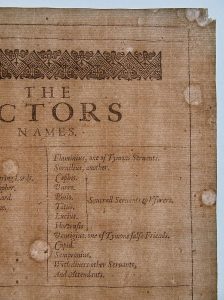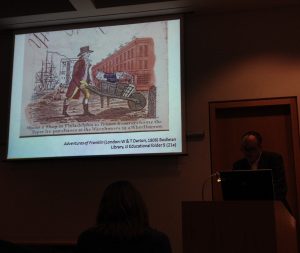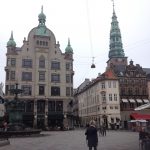Torn, wrinkled, stained and otherwise naughty sheets
A talk by Andrew Honey, British Library 9th of March 2017

Couchers’s drops and missing corner in paper sheet. © Photo by Andrew Honey, Folger STC 22273, copy 2, hh6, courtesy of the Folger Shakespeare Library
How can we, as conservators, interpret paper flaws?
This talk by Andrew Honey, Book Conservator at the Bodleian Library, University of Oxford, focused on paper marks and faults in 17th century paper in England.
The lecture was based on his extensive research about the Shakespeare “First Folio”, the 1623 first publication of William Shakespeare’s collected plays.
Results gathered from the study of the Bodleian Library copies, in addition to the comparison of other editions of the First Folio in the Folger Library in the United States, provided precious information about paper mills and early printing practices. The lecture explored the different flaws that could be produced during the manufacture process; from rust holes, stains, blisters, couchers’ drops, creases in the paper before printing, corner losses or breaks in the paper sheet.
Going back to the very first steps, this journey throughout paper-making led us to try to understand during which part of the process these flaws could happen. Was it the couching of the sheet that was too quick, or a careless lifting, leaving behind a corner piece that got stuck to the next sheet?
But why would these naughty sheets of paper still be used for printing? Sorted in five categories after production, the sheets where divided in “good” or “bad” batches. Damaged papers could be used by bookbinders as flyleaves or pastedowns, while good sheets were usually kept for printing. However, financial considerations or value of the book to be printed might have weighed in the scale and led to the selection of a less good-quality paper for printing.

Purchased paper wheeled home to be printed!
Unfortunately, rebinding and repairs in the 18-19th century have sometimes led these faults to disappear, taking away with them part of the paper mills and printing history.
As conservators, the question then remains: How should we interpret paper flaws? Should we repair what we interpret as faults or risk to hide historic marks that have been undisturbed until now?
 Previous Post
Previous Post